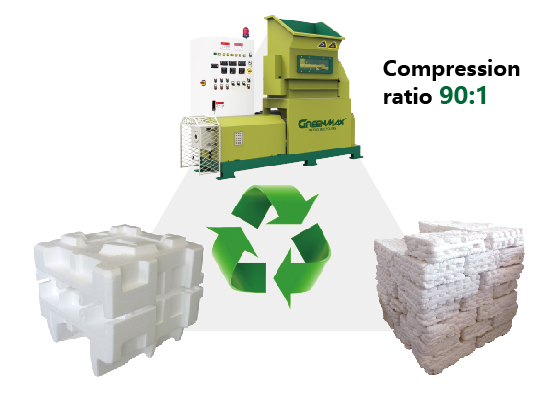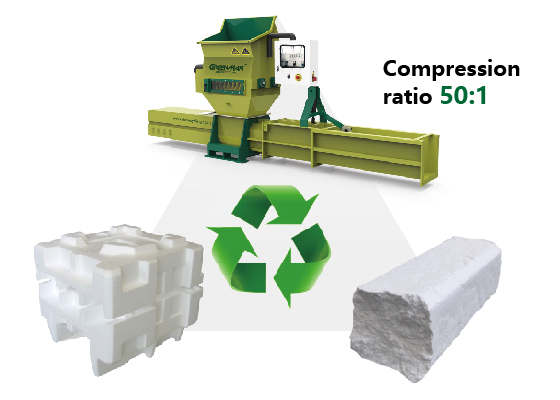Millions of construction polystyrene pieces ending up in Yarra River
A new report from environmental advocate the Yarra Riverkeeper Association has discovered expanded polystyrene (EPS) is one of the most common microplastic in the river, with the majority of it coming from the construction industry.
Report Key points:
- The record discovered polystyrene pollution in 98 percent of building sites
- It additionally found most building companies were not recycling their polystyrene
- Polystyrene is specifically harmful to ecosystems since it consists of harmful chemicals
Retail goods, market produce sectors and also manufacturers were also sources of EPS waste ending up in the river.
We have a whole range of industries where the workers aren't educated well enough, or possibly they don't care. Annually, we're just adding more plastic to our river and to Port Phillip Bay.
From surveys of the Yarra River's 16 litter traps in between December 2020 and October 2021, the researchers approximated more than 382 million items of EPS waste were streaming through the river every year. Because of restrictions in sorting litter catches and accessing waste in reedbeds, it claimed that number was probably an underestimate.
The researchers also taken a look at 80 construction sites within the Yarra River catchment area as part of the report and discovered that 98 percent of them had polystyrene pollution either on-site or in the drains nearby.
A useful construction material, however challenging to storage
Expanded polystyrene is utilized in residential housing building and coming to be progressively popular as building activity increases across Australia.
The industry body, which represents polystyrene suppliers and also recyclers, said 70 percent of the polystyrene made in Australia was utilized for building, including as cheap cladding to insulate homes. It's cheap, light-weight, as well as thermally effective.
Polystyrene "waffle pods" are used to fill concrete slabs to reduce the volume of concrete, which can help to reduce greenhouse gas discharges from cement.
He recognized waste disposal was a concern, although that EPS used in construction is one hundred percent recyclable if it stays clean. It can be used over again. The industry code of conduct requires manufacturers to provide bags to save EPS in and also gather any kind of excess product for recycling.
Ask for more regulatory action
Polystyrene was a difficult material to store due to the fact that it was so light and fragile, however more regulations were required to make sure the industry was doing the right thing.
The Yarra Riverkeepers report found cladding offcuts were being stored in bags at just one of the 80 construction websites it analyzed.
You do see some building sites that are taking care of their polystyrene, they're putting it in bags, as well as it taken back for reusing. However, the vast majority are not.
Victoria's environmental watchdog said building contractors were bound to secure all waste "to avoid it from getting away to the environment".
"If there are incidents such as the escape of waffle slab styrene, which is common on construction sites, they need to call us so we can help them take appropriate activity," Environmental management Authority CEO Lee Miezis said.
"We prefer prevention, yet EPA has and also will certainly penalize building contractors who have not properly managed their onsite waste and will use its powers through the courts to enforce compliance where stronger action is required."
Future changes should support consumers as well as EPS Recycling Industry
We should support individual to maintain polystyrene out of rivers. Some consumer polystyrene products are recyclable however none are accepted with curbside waste disposal. Many Melbourne councils including Yarra, Boroondara, and Moonee Valley offer polystyrene recycling for council citizens at waste depots.
Time to consider promoting and using EPS recycling systems
Waste EPS is constantly polluting our environment and rivers. You must have heard of the famous "The Pacific EPS Patch". Therefore, while we are implementing the policy of forcibly recycling EPS, we must also publicize and use the EPS recycling system to compress and recycle our waste EPS.
Introduction of GREENMAX two EPS recycling systems
GREENMAX EPS Melter Mars Series
GREENMAX EPS Hot Melter Mars Series is equipped with the screw melting technology, specialized in reducing the volume of waste expanded polystyrene foam (EPS) by crushing, hot melting and extrusion molding.

When the EPS melting machine starts, throw the waste EPS into the machine hopper where it is crushed into small pieces, then drop into the screw part where the crushed foam pieces will be pushed out and then melted by heating parts. Finally, the EPS waste will become the hot melted ingots with the density of 90:1, greatly saving transportation and storage costs. This heat-induced densification process is tested and certified by specialist agencies to be efficient, intelligent and safe.
GREENMAX EPS Compactor Apolo Series

GREENMAX EPS Compactor Apolo Series equipped with the screw and automatic hydraulic system, the waste foam can be pre-crushed in the storage bin and then compacted into dense and uniform blocks with a volume reduction ratio of 50:1, greatly reducing the volume of waste foam, therefore saving storage and transportation costs. Specially, Apolo Series EPS Compactor is able to efficiently compact waste foam in any humidity environment, such as the EPS fish boxes that contain water, and wet waste construction EPS.
